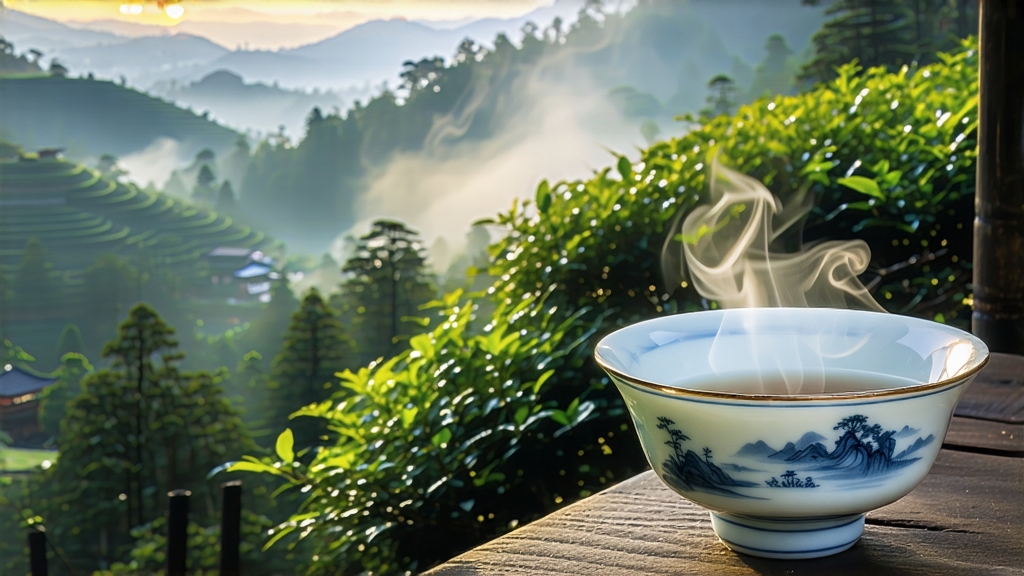
Alishan High-Mountain Oolong is not merely a tea; it is a vertical journey into the clouds. Grown between 1,000 and 1,400 metres on Taiwan’s spine-like Alishan range, this cultivar absorbs the daily rhythm of drifting fog, sharp ultraviolet light, and fifteen-degree diurnal swings that force the leaves to thicken their cell walls and concentrate their aromatic oils. The result is a liquor that tastes like mountain air crystallised—floral, creamy, and laced with a rock-candy sweetness that lingers long after the cup is empty.
Historical roots twist back to the mid-nineteenth century, when cultivars of Fujian’s Wuyi and Anxi were carried across the Taiwan Strait by settlers seeking higher, cooler ground. The original Qingxin (Green Heart) bush adapted so well to Alishan’s acidic laterite soil that local growers coined the phrase “tea follows the cloud line,” staking new gardens only where mist persisted past ten o’clock. By the 1980s, government agricultural stations had stabilised the modern Alishan style—lightly oxidised, heavily aromatised, and tightly pellet-rolled—turning a frontier crop into one of Taiwan’s most emblematic exports.
The tea belongs to the “high-mountain” (gaoshan) oolong family, yet within Alishan itself micro-terroirs create subtle clans. Zhizhong gardens hug the north face, yielding cups with pronounced orchid and fresh-cut cucumber notes. Shizhuo plots sit on red-clay ridges; their leaf picks up iron-rich minerality that translates into a wet-stone finish. In Fenqihu, the famous alpine railway skirts terraces where cooler nights lengthen the growing season, amplifying a natural milky mouthfeel locals call “milk fog.” Regardless of slope, only the Jin Xuan (TTES #12) and Qingxin (TTES #13) cultivars are permitted under the Alishan Geographical Indication, ensuring that every kilo sold is genetically traceable to these misty peaks.
Craft begins before dawn, when pluckers select the “small open leaf” standard—three partially mature leaves still tipped with dew. The goal is cellular integrity: thicker high-altitude leaves resist bruising, allowing a longer outdoor withering under the rising sun. Bamboo trays are set on hillside racks where mountain wind, not factory fans, flutters the leaf edges for four to six hours. Oxidation is choreographed inside perforated drums that rotate every fifteen minutes; the tea master inhales the aroma plume each time the hatch opens, waiting for the precise moment when green floral notes tilt toward white peach. At 18–22 % oxidation—about half of what a traditional Wuyi oolong receives—the firing is abruptly halted by a 300 °C tumble roast that flash-cooks the leaf surface, sealing the bright aromatics.
The most recognisable step is the “ball rolling” cycle: cloth-wrapped nuggets are placed inside mechanical barrels that mimic the original foot-pressing technique, alternating pressure and heat for no fewer than thirty passes over four hours. Gradually, the leaf’s cell sap extrudes through ruptured walls, coating the pellet with its own nectar. When unfurled in hot water, each sphere blossoms into an intact sprig, the veins still visible like fossilised wings. A final low-temperature bake at 80 °C for six hours reduces moisture to 3 %, yet the bake is stopped while the stem retains a faint flexibility—insurance against the brittle over-roasting that masks high-altitude perfume.
Water is the silent ingredient. In Taiwan, cupping competitions are staged with local spring water at 95 °C, but international drinkers can replicate the ionic balance by mixing one part Volvic to two parts low-TDS Scottish spring water. Pre-warm a 120 ml porcelain gaiwan; for every gram of tea, use 15 ml of water. The first five-second rinse is discarded—not out of hygiene but to awaken the pellet’s core. Subsequent steeps lengthen by five-second increments: 10 s, 15 s, 20 s… up to twelve infusions. Watch the leaves unfurl through the translucent rim; by the fourth steep they resemble tiny green parachutes drifting in a pale-gold sky.
Aroma assessment follows a three-breath rule. After pouring, hover your nose above the gaiwan lid: the first breath captures top florals, the second registers deeper stone-fruit esters, and the third should reveal